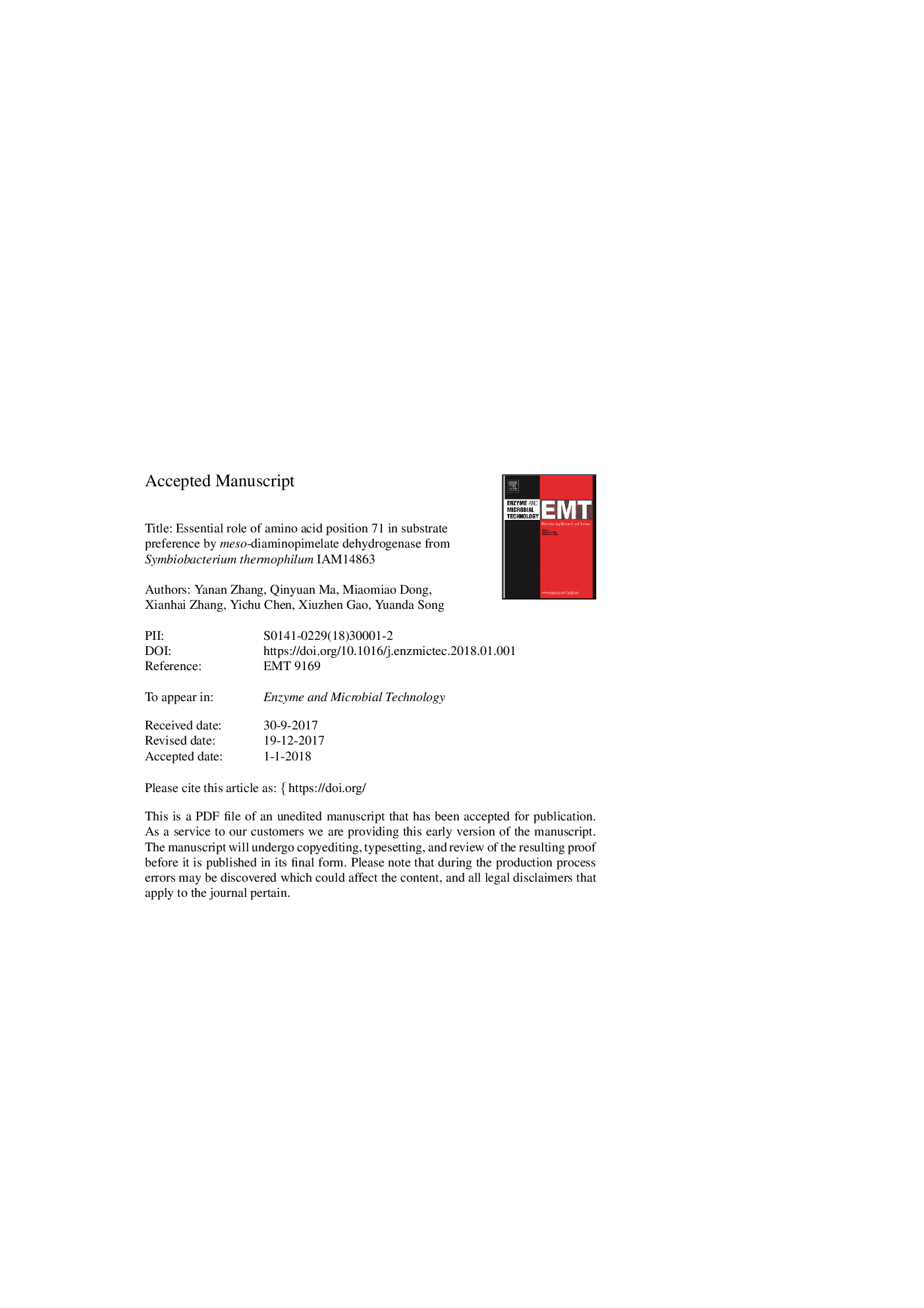| Article ID | Journal | Published Year | Pages | File Type |
|---|---|---|---|---|
| 6488168 | Enzyme and Microbial Technology | 2018 | 23 Pages |
Abstract
mesoÂ-Diaminopimelate dehydrogenase (meso-DAPDH) catalyzes the reversible oxidative deamination of the dÂconfiguration of meso-2,6Âdiaminopimelate (meso-DAP) and is thought to have substrate specificity toward meso-DAP. The discovery of the meso-DAPDH from Symbiobacterium thermophilum IAM14863 (StDAPDH) revealed meso-DAPDH members with broad substrate specificity. In order to elucidate the substrate-preference mechanism of StDAPDH, it is necessary to identify the key residues related to this mechanism. Our previous work suggested that the non-active-site R71 of StDAPDH was related to substrate preference. Here, we report the key roles of the non-active site on the catalysis of StDAPDH. In order to explore the mechanism through which non-active-site R71 only affected the amination activity of StDAPDH, we performed molecular dynamic simulations and investigated the functional role of R71 in the type II meso-DAPDH StDAPDH. Site-directed mutagenesis with the allelic site A69 of CgDAPDH as a target proved that when replaced by Arg at position 71 of StDAPDH, the CgA69R mutant showed higher catalytic efficiencies toward a series of 2-keto acids, ranging from 1.2- to 1.5-fold. These findings provide some guidelines for improving our understanding of the broad substrate specificity of StDAPDH.
Related Topics
Physical Sciences and Engineering
Chemical Engineering
Bioengineering
Authors
Yanan Zhang, Qinyuan Ma, Miaomiao Dong, Xianhai Zhang, Yichu Chen, Xiuzhen Gao, Yuanda Song,
